How to create Worldpeace
Download as pptx, pdf1 like505 views
A presentation about creating Worldpeace by being happy and spreading the hapiness to others. www.leukedingen.wordpress.com
1 of 87
Download to read offline

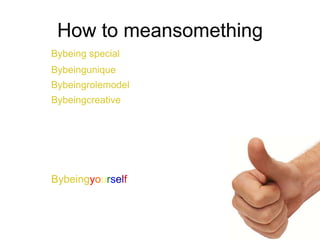
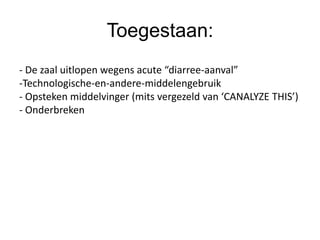
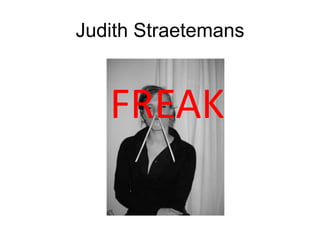
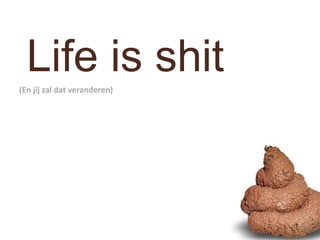



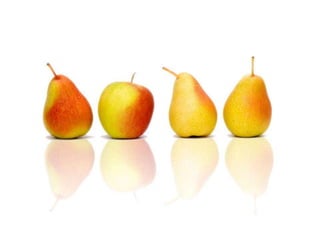


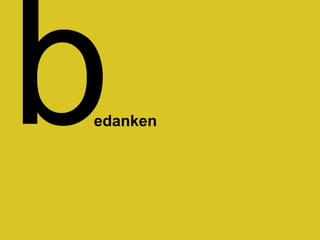


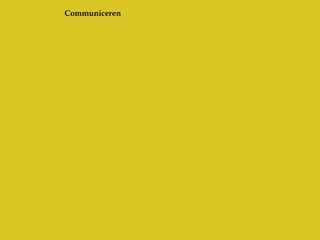
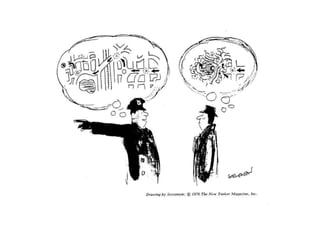












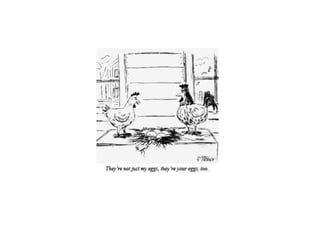
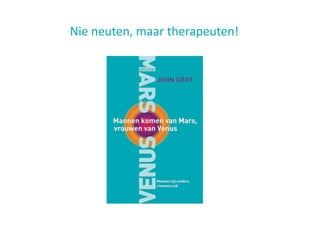


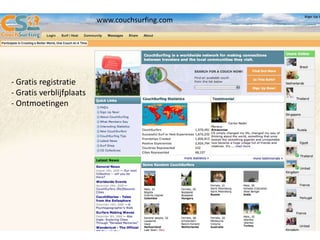









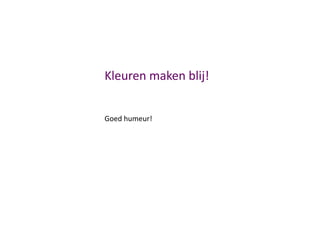

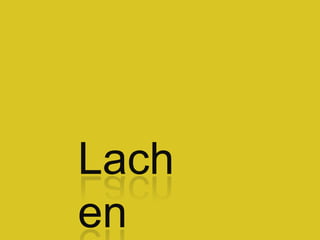










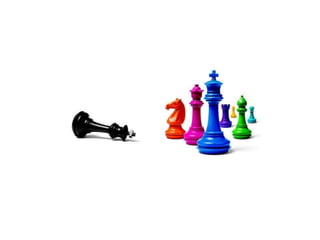


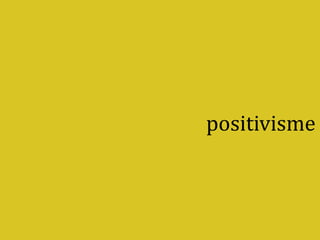









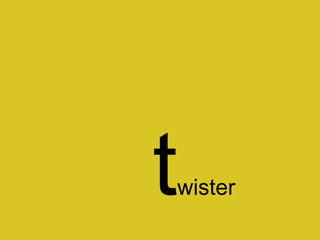


















Ad
Recommended
Indian marriage pm_v0.3
Indian marriage pm_v0.3for_kapoor
╠²
This presentation discusses an Indian wedding using the McKinsey 7S framework. It analyzes the key elements of an Indian wedding through the lens of Strategy, Structure, Shared Values, Skills, Staff, Style, and Systems. Some highlights include outlining the importance of brand, astrology, managing the large logistics of 500+ guests, and using project management techniques to plan the multi-day event. Photos from weddings show celebrations such as dancing, processions, and exchanging garlands during the marriage ceremony.Memorable Indian Weddings "Memorable India"
Memorable Indian Weddings "Memorable India"Memorable India
╠²
Hindu arranged marriages involve various rituals and customs, starting with the selection of the bride and groom by their parents. Marriage signifies the second stage of life, known as grahastha ashram, and is seen as an important institution that unites not just the couple but their families and the community. The process highlights the values and significance of married life in Indian society.intergrity
intergrityphyllis bishopturner
╠²
This document discusses several important agencies and programs related to social services and economic benefits. It begins by discussing the Social Security Administration, established in 1935 by President Roosevelt, which provides retirement and disability benefits. It then lists four main agencies - Social Security Administration, Department of Human Resources/Health, Department of Veteran Affairs, and Department of Child Support Enforcement - that collaborate to share client information between various assistance programs. Finally, it defines disability as a medical condition expected to last over 12 months that hinders one's ability to work, and lists three types of disabilities: mental, physical, and employment-related.Integrity in Relationship
Integrity in Relationshiphappykaruna
╠²
The document discusses the importance of integrity in relationships with God and others. It emphasizes living consistently according to what one believes and avoiding hypocrisy. It provides examples of a lack of integrity in various relationships like marriage, family, work, church and relationships between genders. It stresses the importance of accountability, respect, trust and communication in building strong relationships based on integrity.UN
UNlekhraj nagar
╠²
The United Nations plays an important role in policy formulation through its various organs. The General Assembly is the main policymaking body and represents 193 member states. The Security Council maintains international peace and security with 15 members, including 5 permanent members. The Economic and Social Council coordinates work on economic and social issues. Specialized agencies also contribute to policy on issues like health, education, and development. The UN has strengthened its role in promoting cooperation and policy across member states.Research and Role Conflict
Research and Role Conflict Kim Tairi
╠²
The document discusses the importance of evidence-based practices in research and collaboration in academia, highlighting contributions from various individuals. It emphasizes the value of sharing outcomes and collaborative efforts with students to create impactful real-world results. Additionally, it touches on the significance of networking, continuous learning, and contributing to a diverse body of knowledge.Indian farmer
Indian farmerSurjeet Randhir Singh Dhaka
╠²
The document summarizes key findings from the Situation Assessment Survey of Agricultural Households conducted in India in 2013 by the National Sample Survey Office. Some of the main points from the survey include:
- Rural India had an estimated 90.2 million agricultural households, representing 57.8% of total rural households. Around 45% of farm households belonged to other backward classes.
- For 56% of marginal landholding families (less than 0.01 hectare), wage/salary employment rather than agriculture was the main source of income. Another 23% relied mainly on livestock.
- On average, agricultural households earned Rs. 6,426 per month. Farm business contributed 60% of income while wages contributed 32%. Using Contemporary/Performance Art to Inspire Multimodal Presentation Ideas
Using Contemporary/Performance Art to Inspire Multimodal Presentation IdeasJude Kuepper
╠²
The document discusses various artists and their expressive methods to communicate ideas about societal issues, including Christo and Yoko Ono's notable projects. It highlights performance art and its evolution, focusing on artists like Laurie Anderson and Tracey Emin, who use personal experiences and social commentary in their work. Additionally, it includes a group activity for students to create sound environments representing different places.Social Media & Integrity
Social Media & IntegrityMathias Klang
╠²
This document discusses the relationship between technology, social media, information, and individual integrity and autonomy. It argues that creating laws without also regulating the underlying technologies and infrastructure is ineffective, as technology shapes human interaction and thought. Examples are given of how information posted online can be misapplied or misunderstood when taken out of context. The network effects of social media platforms also impact individual autonomy by limiting who knows what information about people. Understanding how technology controls information dissemination and use is important for protecting privacy and integrity in the digital age.Integrity in relationship reflection
Integrity in relationship reflectionhappykaruna
╠²
The document discusses maintaining integrity in relationships and family life. It emphasizes upholding God's word and seeking His kingdom first. To build integrity, it recommends open communication, modeling godly behavior, spending time together in prayer and Bible study, and cultivating an environment of love, honesty and forgiveness. Challenges like compromise, live-in relationships and divorce damage integrity, while repentance, confession and continued obedience can lead to reconciliation.Chapter 7
Chapter 7WanBK Leo
╠²
The document defines stress and differentiates between stressors, which are demands that cause stress, and strains, which are the negative consequences of stress. It outlines the four main types of work stressors as role conflict, role ambiguity, role overload, and daily hassles. It also discusses challenge and hindrance stressors, how individuals cope with stress through problem-focused and emotion-focused strategies, and how social support and the Type A personality influence the stress process. Finally, it notes that stress can negatively impact job performance and organizational commitment.Presented at Vivekananda Kendra, Kanyakumari : - World ŌĆō A Family
Presented at Vivekananda Kendra, Kanyakumari : - World ŌĆō A Family Pushpendra Singh Dangi
╠²
The presentation emphasizes the need for global peace and unity, advocating the idea of 'Vasudhaiva Kutumbakam' or 'the world is one family' as a solution to modern conflicts. It highlights teachings from historical figures like Swami Vivekananda and the importance of recognizing the interconnectedness of all humanity beyond religious and cultural differences. Ultimately, it calls for collective harmony and cooperation to ensure a healthy and beautiful world for future generations.Indian marriages vs. Western Marriages
Indian marriages vs. Western MarriagesKunika Kanodia
╠²
The document compares Indian marriages with Western marriages, highlighting cultural differences in practices, traditions, and societal meanings. It discusses the significance and rituals associated with Hindu and Muslim marriages in India, contrasting them with the Western approach to marriage, including proposals, engagement, and wedding ceremonies. Overall, it emphasizes marriage as a critical social institution with varying cultural interpretations and practices across different societies.Research and Role conflict
Research and Role conflict Kim Tairi
╠²
1. Researchers must provide evidence to support their work and advocate for their values.
2. Conducting research requires a systematic investigation similar to researching for a novel.
3. Collaboration with students is mutually beneficial, as students provide new perspectives while the researchers gain insights into open questions.Indian farmer presentation
Indian farmer presentationSimrat Singh
╠²
This document presents information about Indian farmers and agriculture. It discusses the role of agriculture in the Indian economy, providing employment and food surplus. However, farmers face many challenges including unreliable monsoons, lack of organization, technology, electricity, and education. Their small land sizes also present difficulties. To improve conditions, farmers need more education, technology, government support, financing, and quality seeds. The presentation concludes with the question "Any question?"Llb i el u 2.1 enviornment pollution
Llb i el u 2.1 enviornment pollutionRai University
╠²
The document discusses environmental laws and policies in India. It outlines how the Department of Environment was established in 1980 and became the Ministry of Environment and Forests in 1985 after the Bhopal gas tragedy. It also summarizes the key types of environmental pollution in India like air, water, land, noise, and thermal pollution. The underlying causes of environmental degradation are identified as social factors like population and poverty, economic factors like market distortions, and institutional factors like lack of implementation of laws.Po report 5 - Role Conflict
Po report 5 - Role ConflictSyaff Hk
╠²
The document discusses role conflict experienced by employees at Maggie's, a telephone service company. The employees felt torn between prioritizing customer service by spending unlimited time solving problems, versus meeting manager expectations to handle high call volumes. This role conflict led to issues like increased turnover and lower job satisfaction. While team members in other jobs also face balancing boss and peer expectations, Maggie's employees experience greater internal conflict due to the challenge of satisfying both customers and management without compromising service quality.Save energy save enviornment ii
Save energy save enviornment iiSwathi Venugopal
╠²
This document presents information on Earth Hour and renewable energy sources as alternatives to fossil fuels to mitigate climate change. It summarizes that in 2012, over 400 cities and 50 million people participated in Earth Hour where major landmarks turned off their lights for an hour. It then discusses various renewable energy sources like solar, wind, tidal, hydroelectric, and geothermal that provide clean alternatives to non-renewable sources. The document advocates that increasing the use of renewable energy and implementing energy conservation measures can help reduce carbon emissions and address global warming.Looking at conflict differently
Looking at conflict differentlyEuropean Economic and Social Committee - SOC Section
╠²
The conference discusses the importance of non-violence and new strategies for conflict resolution in the 21st century, emphasizing the failure of traditional methods that rely on coercion. It explores alternative approaches informed by behavioral economics and social psychology, highlighting stages of conflict escalation and the necessity of effective communication. The document concludes with a call for self-reflection, understanding emotions, and active engagement to foster peaceful dialogue.Shri krishna
Shri krishnakksharma786
╠²
Janmashtami is celebrated to commemorate the birth of Lord Krishna. It is observed on the eighth day of the Krishna Paksha in the month of Shravan according to the Hindu calendar. Lord Krishna took birth in a prison cell in Mathura to end the tyranny of the evil king Kansa and free the land from demons. His birth was heralded by signs and he was transferred to Gokul by his father Vasudev to protect him from Kansa. Devotees celebrate the day by fasting, singing devotional songs and dances depicting Krishna's life.Enviornment &forest
Enviornment &forestAkash Tammadwar
╠²
Indira Gandhi introduced environmental issues into India's national political agenda during her terms as prime minister from 1966-1977 and 1980-1984. This included adding Article 48A to the constitution in 1976 requiring the state to protect and improve the environment. Control over wildlife and forests was also shifted from state to concurrent jurisdiction, giving the central government more power over these issues. These changes paved the way for the creation of a federal Department of Environment in 1980, which became the Ministry of Environment and Forests in 1985 to oversee authorities like the Central Zoo Authority of India and National Biodiversity Authority of India.Conflict Management
Conflict ManagementShubham Aggarwal
╠²
This document discusses organizational conflict and types of conflict. It defines conflict as opposition or disputes between individuals, groups, or ideas. Conflicts can emerge within or between organizations. The document outlines various sources of conflict including organizational change, personality clashes, and differing values. It categorizes conflicts as individual, group, or organizational level and describes interpersonal and intrapersonal conflict in more detail. Both positive and negative effects of conflict are presented. The document concludes with discussing procedures for resolving conflicts such as diagnosing issues, identifying conflict handling modes, and allowing parties to settle issues through mediation or mutual problem solving.More Related Content
Viewers also liked (16)
Indian farmer
Indian farmerSurjeet Randhir Singh Dhaka
╠²
The document summarizes key findings from the Situation Assessment Survey of Agricultural Households conducted in India in 2013 by the National Sample Survey Office. Some of the main points from the survey include:
- Rural India had an estimated 90.2 million agricultural households, representing 57.8% of total rural households. Around 45% of farm households belonged to other backward classes.
- For 56% of marginal landholding families (less than 0.01 hectare), wage/salary employment rather than agriculture was the main source of income. Another 23% relied mainly on livestock.
- On average, agricultural households earned Rs. 6,426 per month. Farm business contributed 60% of income while wages contributed 32%. Using Contemporary/Performance Art to Inspire Multimodal Presentation Ideas
Using Contemporary/Performance Art to Inspire Multimodal Presentation IdeasJude Kuepper
╠²
The document discusses various artists and their expressive methods to communicate ideas about societal issues, including Christo and Yoko Ono's notable projects. It highlights performance art and its evolution, focusing on artists like Laurie Anderson and Tracey Emin, who use personal experiences and social commentary in their work. Additionally, it includes a group activity for students to create sound environments representing different places.Social Media & Integrity
Social Media & IntegrityMathias Klang
╠²
This document discusses the relationship between technology, social media, information, and individual integrity and autonomy. It argues that creating laws without also regulating the underlying technologies and infrastructure is ineffective, as technology shapes human interaction and thought. Examples are given of how information posted online can be misapplied or misunderstood when taken out of context. The network effects of social media platforms also impact individual autonomy by limiting who knows what information about people. Understanding how technology controls information dissemination and use is important for protecting privacy and integrity in the digital age.Integrity in relationship reflection
Integrity in relationship reflectionhappykaruna
╠²
The document discusses maintaining integrity in relationships and family life. It emphasizes upholding God's word and seeking His kingdom first. To build integrity, it recommends open communication, modeling godly behavior, spending time together in prayer and Bible study, and cultivating an environment of love, honesty and forgiveness. Challenges like compromise, live-in relationships and divorce damage integrity, while repentance, confession and continued obedience can lead to reconciliation.Chapter 7
Chapter 7WanBK Leo
╠²
The document defines stress and differentiates between stressors, which are demands that cause stress, and strains, which are the negative consequences of stress. It outlines the four main types of work stressors as role conflict, role ambiguity, role overload, and daily hassles. It also discusses challenge and hindrance stressors, how individuals cope with stress through problem-focused and emotion-focused strategies, and how social support and the Type A personality influence the stress process. Finally, it notes that stress can negatively impact job performance and organizational commitment.Presented at Vivekananda Kendra, Kanyakumari : - World ŌĆō A Family
Presented at Vivekananda Kendra, Kanyakumari : - World ŌĆō A Family Pushpendra Singh Dangi
╠²
The presentation emphasizes the need for global peace and unity, advocating the idea of 'Vasudhaiva Kutumbakam' or 'the world is one family' as a solution to modern conflicts. It highlights teachings from historical figures like Swami Vivekananda and the importance of recognizing the interconnectedness of all humanity beyond religious and cultural differences. Ultimately, it calls for collective harmony and cooperation to ensure a healthy and beautiful world for future generations.Indian marriages vs. Western Marriages
Indian marriages vs. Western MarriagesKunika Kanodia
╠²
The document compares Indian marriages with Western marriages, highlighting cultural differences in practices, traditions, and societal meanings. It discusses the significance and rituals associated with Hindu and Muslim marriages in India, contrasting them with the Western approach to marriage, including proposals, engagement, and wedding ceremonies. Overall, it emphasizes marriage as a critical social institution with varying cultural interpretations and practices across different societies.Research and Role conflict
Research and Role conflict Kim Tairi
╠²
1. Researchers must provide evidence to support their work and advocate for their values.
2. Conducting research requires a systematic investigation similar to researching for a novel.
3. Collaboration with students is mutually beneficial, as students provide new perspectives while the researchers gain insights into open questions.Indian farmer presentation
Indian farmer presentationSimrat Singh
╠²
This document presents information about Indian farmers and agriculture. It discusses the role of agriculture in the Indian economy, providing employment and food surplus. However, farmers face many challenges including unreliable monsoons, lack of organization, technology, electricity, and education. Their small land sizes also present difficulties. To improve conditions, farmers need more education, technology, government support, financing, and quality seeds. The presentation concludes with the question "Any question?"Llb i el u 2.1 enviornment pollution
Llb i el u 2.1 enviornment pollutionRai University
╠²
The document discusses environmental laws and policies in India. It outlines how the Department of Environment was established in 1980 and became the Ministry of Environment and Forests in 1985 after the Bhopal gas tragedy. It also summarizes the key types of environmental pollution in India like air, water, land, noise, and thermal pollution. The underlying causes of environmental degradation are identified as social factors like population and poverty, economic factors like market distortions, and institutional factors like lack of implementation of laws.Po report 5 - Role Conflict
Po report 5 - Role ConflictSyaff Hk
╠²
The document discusses role conflict experienced by employees at Maggie's, a telephone service company. The employees felt torn between prioritizing customer service by spending unlimited time solving problems, versus meeting manager expectations to handle high call volumes. This role conflict led to issues like increased turnover and lower job satisfaction. While team members in other jobs also face balancing boss and peer expectations, Maggie's employees experience greater internal conflict due to the challenge of satisfying both customers and management without compromising service quality.Save energy save enviornment ii
Save energy save enviornment iiSwathi Venugopal
╠²
This document presents information on Earth Hour and renewable energy sources as alternatives to fossil fuels to mitigate climate change. It summarizes that in 2012, over 400 cities and 50 million people participated in Earth Hour where major landmarks turned off their lights for an hour. It then discusses various renewable energy sources like solar, wind, tidal, hydroelectric, and geothermal that provide clean alternatives to non-renewable sources. The document advocates that increasing the use of renewable energy and implementing energy conservation measures can help reduce carbon emissions and address global warming.Looking at conflict differently
Looking at conflict differentlyEuropean Economic and Social Committee - SOC Section
╠²
The conference discusses the importance of non-violence and new strategies for conflict resolution in the 21st century, emphasizing the failure of traditional methods that rely on coercion. It explores alternative approaches informed by behavioral economics and social psychology, highlighting stages of conflict escalation and the necessity of effective communication. The document concludes with a call for self-reflection, understanding emotions, and active engagement to foster peaceful dialogue.Shri krishna
Shri krishnakksharma786
╠²
Janmashtami is celebrated to commemorate the birth of Lord Krishna. It is observed on the eighth day of the Krishna Paksha in the month of Shravan according to the Hindu calendar. Lord Krishna took birth in a prison cell in Mathura to end the tyranny of the evil king Kansa and free the land from demons. His birth was heralded by signs and he was transferred to Gokul by his father Vasudev to protect him from Kansa. Devotees celebrate the day by fasting, singing devotional songs and dances depicting Krishna's life.Enviornment &forest
Enviornment &forestAkash Tammadwar
╠²
Indira Gandhi introduced environmental issues into India's national political agenda during her terms as prime minister from 1966-1977 and 1980-1984. This included adding Article 48A to the constitution in 1976 requiring the state to protect and improve the environment. Control over wildlife and forests was also shifted from state to concurrent jurisdiction, giving the central government more power over these issues. These changes paved the way for the creation of a federal Department of Environment in 1980, which became the Ministry of Environment and Forests in 1985 to oversee authorities like the Central Zoo Authority of India and National Biodiversity Authority of India.Conflict Management
Conflict ManagementShubham Aggarwal
╠²
This document discusses organizational conflict and types of conflict. It defines conflict as opposition or disputes between individuals, groups, or ideas. Conflicts can emerge within or between organizations. The document outlines various sources of conflict including organizational change, personality clashes, and differing values. It categorizes conflicts as individual, group, or organizational level and describes interpersonal and intrapersonal conflict in more detail. Both positive and negative effects of conflict are presented. The document concludes with discussing procedures for resolving conflicts such as diagnosing issues, identifying conflict handling modes, and allowing parties to settle issues through mediation or mutual problem solving.How to create Worldpeace
- 1. How to createworldpeaceByreleasingyour inner freak
- 2. How to meansomethingBybeing specialBybeinguniqueBybeingrolemodelBybeingcreativeBybeingyourself
- 3. Toegestaan: De zaal uitlopen wegens acute ŌĆ£diarree-aanvalŌĆØ
- 5. Opsteken middelvinger (mits vergezeld van ŌĆśCANALYZE THISŌĆÖ)
- 7. Life is shit(En jij zal dat veranderen)
- 10. Anders
- 14. bedanken
- 17. Communiceren
- 20. dronken zijn
- 23. Energie
- 26. fantaseer
- 29. gender
- 32. Nie neuten, maar therapeuten!
- 34. hosten
- 38. Impulsiviteit
- 41. joking
- 44. kleur
- 46. Kleuren maken blij! Goed humeur!
- 48. Lachen
- 52. Mac
- 55. ▒Ę▒│▄ŌĆ”
- 56. Freaks!
- 58. Overwinnen
- 62. positivisme
- 63. Aan alles negatiefIs iets positief
- 66. Raken
- 69. snoeppot
- 72. twister
- 75. uitleven
- 79. verrassen
- 81. worst
- 82. VanŌĆśhet zal me worst wezenŌĆÖ
- 84. YOU
- 87. Ziezo
- 88. Einde
- 89. (Sleutels mag je achteraan in de hoed werpen)
